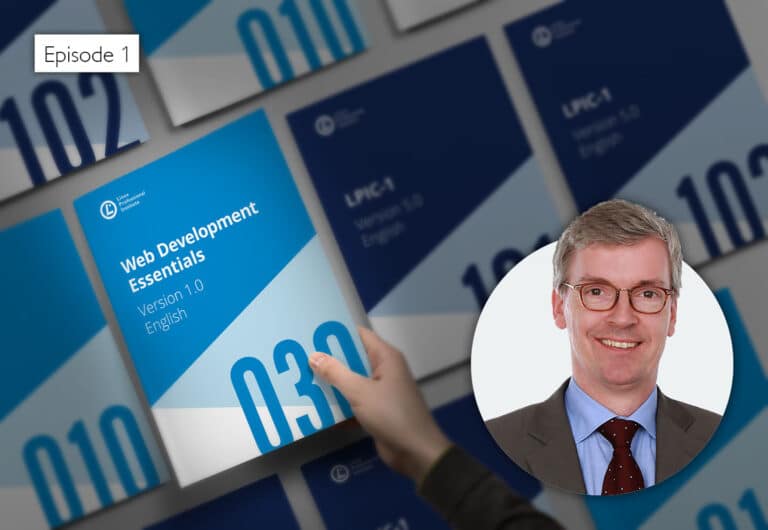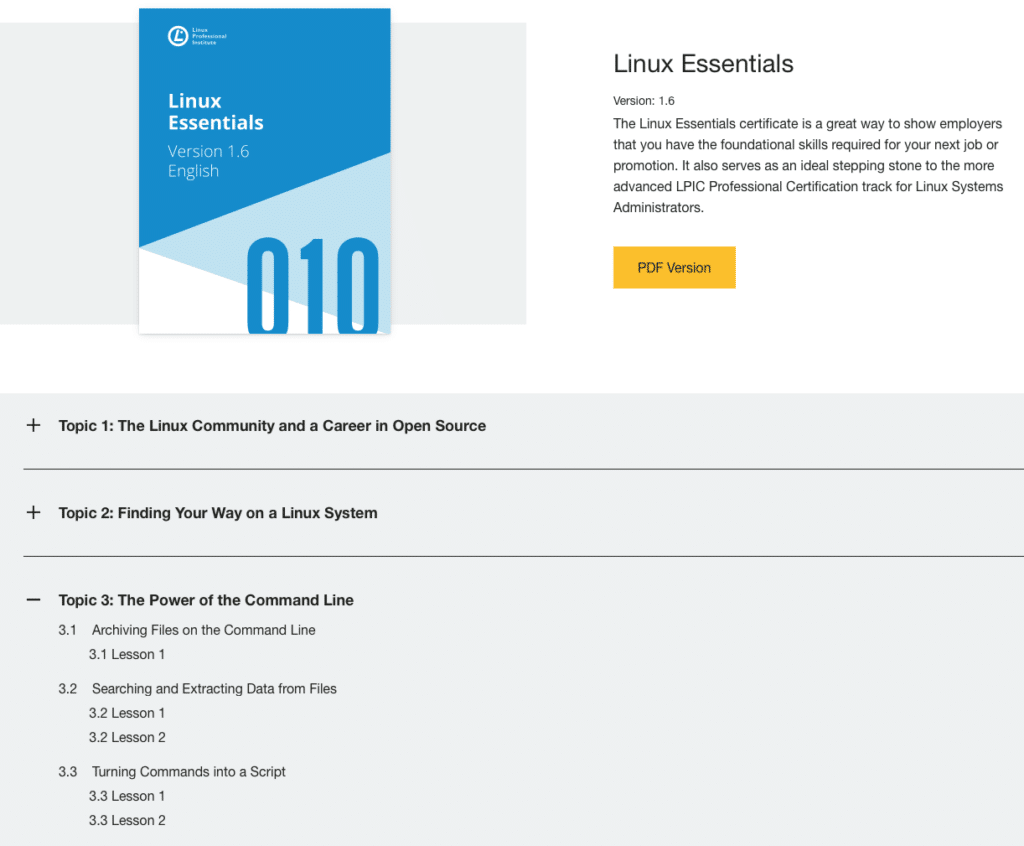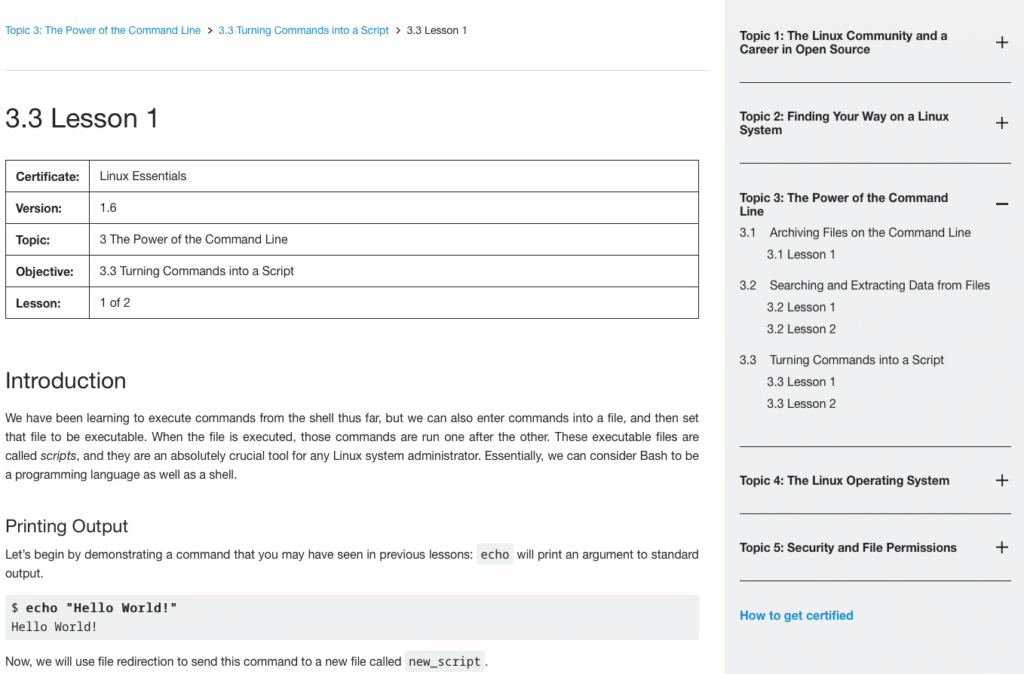Exam Preparation with the LPI Learning Materials

The Linux Professional Institute (LPI) started its Learning initiative in 2019 by publishing the first Learning Materials on learning.lpi.org. As a supplement to specialist books from publishers or other platforms, the Learning Materials are designed for intensive preparation for their respective LPI exams. The Learning Materials for each exam are organized around the same categories as that exam and cover the relevant topics. These topics are published on the LPI wiki.
Objectives and Lessons
Let’s take a look at how the Learning Materials are structured and how to get the most benefit from exam preparation.
The Learning Materials follow exactly the topics and objectives of each exam. Each objective is dealt with in one to three lessons, depending on its weight in the exam. For example, consider objective 3.3, “Turning Commands into a Script,” of the Linux Essentials exam. The web site lists the objective as shown in Figure 1.
Figure 1: Objective listing has a weight of 4.
The weight given is 4, which means that 4 of the 40 exam questions are dedicated to this objective. In the Learning Materials: 2 points in weight correspond to one lesson. Therefore, an objective weighted with 4 is treated accordingly in 2 lessons, as shown at the bottom of Figure 2.

Figure 2. Objective 3.3 consists of two lessons.
Lesson Structure
All lessons have the same structure.
The Introduction lays out the areas of knowledge specified for the objective and explains the respective technologies, terms, and tools with clear practical examples (Figure 3). Background knowledge is assumed, so the explanations are limited to the required knowledge without repeating the necessary prerequisites.
The Introduction is followed by two sections with exercises. Guided Exercises consolidate the previously summarized knowledge and can be solved after carefully reading the Introduction. The subsequent Explorational Exercises go a step further and may require additional research, such as looking for options or arguments for a specific command on the command line that were not mentioned in the Introduction.
After a short Summary, the two exercise blocks follow again, but this time with the correct solutions.

Figure 3. Beginning of the Introduction to a lesson.
For Classes and Self-study
Why this particular structure? Who can make best use of the Learning Materials, and how?
Teachers and trainers usually organize their teaching load in lessons, so each lesson in the Learning Materials is designed for 45-90 minutes of instruction, depending on the level of knowledge of the students. The content is prepared in such a way that the teacher either presents it or reads and develops it together with the students in the class. For example, inputs and outputs on the command line are selected and summarized so that they can be understood when reading, even without computer workstations in class.
The exercises, which can either be addressed in class or assigned as homework and then compared with the solutions, are also of great advantage.
The clear structure of the lessons, as well as the focus of the Learning Materials to the objectives, allow very precise planning of the curriculum. The Learning Materials are thus a useful, out-of-the-box resource, especially for teachers who often have little time for lesson preparation.
The second group of recipients are all those who prepare for the exam through self-study. The availability of the Learning Materials online, in HTML or as a PDF for download, offers great flexibility in preparation.
Here too, the three-step “learn – test – check” process has proven successful. And since the lessons are self-contained units, candidates need to work only on the topics with which they are unfamiliar, perhaps because these skills are not so relevant in their daily work, to close their gaps in knowledge. So students can focus on the lessons about topics in which they don’t yet feel confident.
One strategy for self-study is to take a look at the exercises (without solutions) and check how confident you are of the answer. If there are any doubts, read the Introduction and then try again.
Languages and Formats
Learning is easiest in your own language. That’s why the Learning Materials are already available in numerous translations – and more are constantly being added.
And last but not least: The LPI Learning Materials are freely available for non-commercial use! Teachers, trainers, and students are cordially invited to use or download them at learning.lpi.org. For commercial use–for example as teaching material in a paid course–the course providers have the opportunity to brand and use the Learning Materials with their own company logo as an LPI Training Partner.
So let’s summarize the main features of LPI Learning Materials:
- Cover all topics relevant to the exam
- Classroom-ready structure
- In class or for self-study
- Available in many languages
- Ongoing updates and corrections
- Free of charge for non-commercial use
- Co-branded PDFs for LPI Training Partners
Have fun preparing with the LPI Learning Materials and good luck with the exams!
In the next blog post we will describe how you as a FOSS expert can participate in the development of the LPI Learning Materials.

Very well explained. Looking for the same type of material for Lpic 2 and Lpic 3 exams.
Hi Petru, we will release an update for LPIC-2 in 2024 and we are also planning to release Learning Materials for it. LPIC-3 is too specific, I assume.